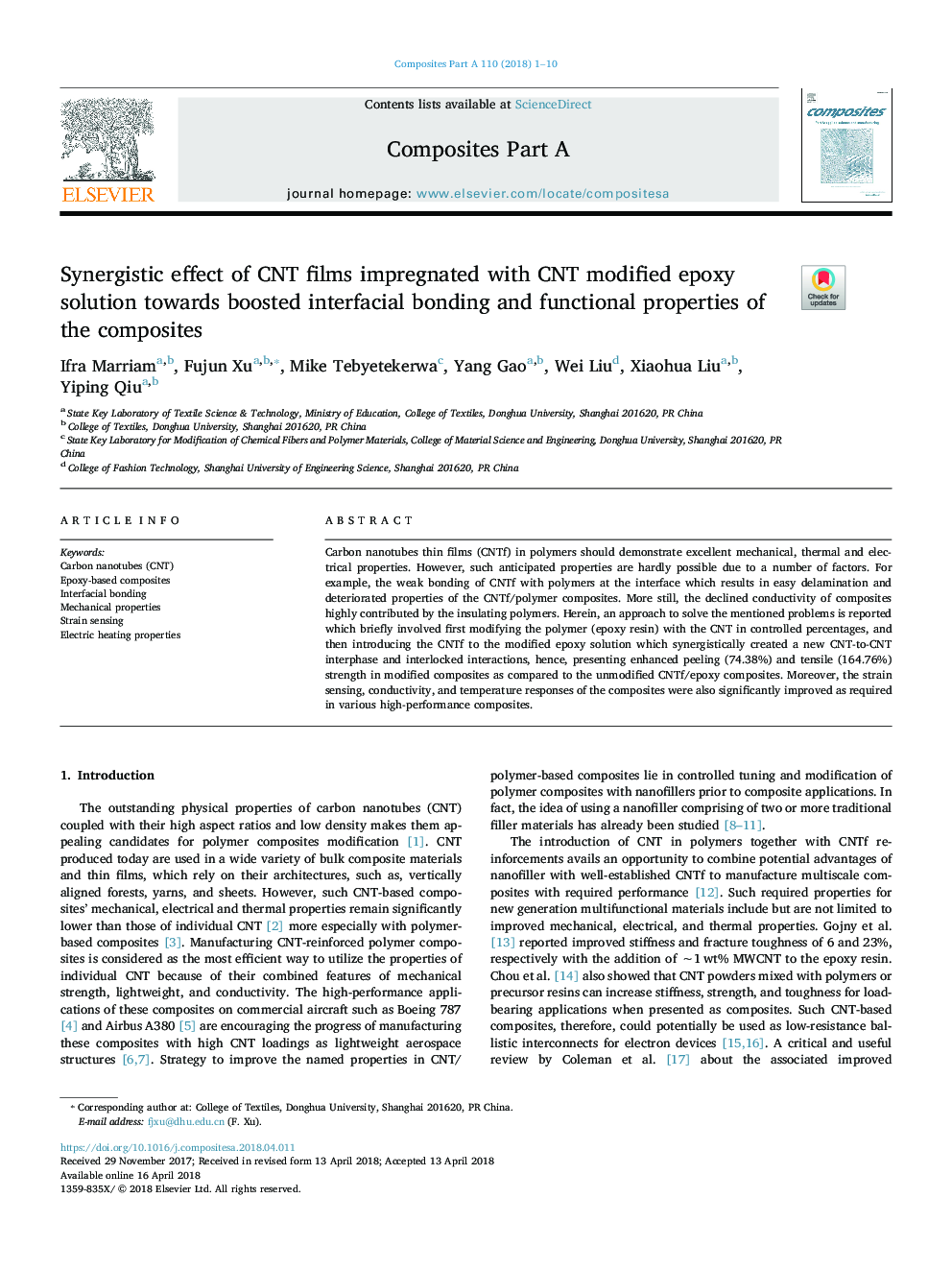| Article ID | Journal | Published Year | Pages | File Type |
|---|---|---|---|---|
| 7889427 | Composites Part A: Applied Science and Manufacturing | 2018 | 10 Pages |
Abstract
Carbon nanotubes thin films (CNTf) in polymers should demonstrate excellent mechanical, thermal and electrical properties. However, such anticipated properties are hardly possible due to a number of factors. For example, the weak bonding of CNTf with polymers at the interface which results in easy delamination and deteriorated properties of the CNTf/polymer composites. More still, the declined conductivity of composites highly contributed by the insulating polymers. Herein, an approach to solve the mentioned problems is reported which briefly involved first modifying the polymer (epoxy resin) with the CNT in controlled percentages, and then introducing the CNTf to the modified epoxy solution which synergistically created a new CNT-to-CNT interphase and interlocked interactions, hence, presenting enhanced peeling (74.38%) and tensile (164.76%) strength in modified composites as compared to the unmodified CNTf/epoxy composites. Moreover, the strain sensing, conductivity, and temperature responses of the composites were also significantly improved as required in various high-performance composites.
Related Topics
Physical Sciences and Engineering
Materials Science
Ceramics and Composites
Authors
Ifra Marriam, Fujun Xu, Mike Tebyetekerwa, Yang Gao, Wei Liu, Xiaohua Liu, Yiping Qiu,
